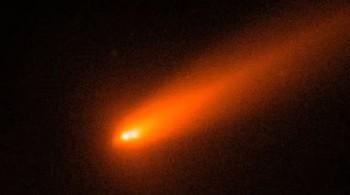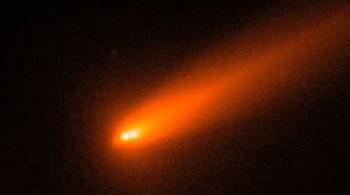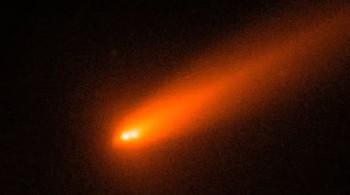
Comet C/2025 K1 (ATLAS) breaks into 3 after coming close to Sun
The universe is full of mysteries and wonders, and sometimes, we get to witness events that are both awe-inspiring and rare. Recently, astronomers observed a remarkable occurrence when Comet C/2025 K1 (ATLAS) broke into three pieces after swinging too close to the Sun. This extraordinary event was captured using Italy’s Copernicus telescope, providing stunning images of the comet’s fragmentation.
Comet C/2025 K1 (ATLAS) was discovered earlier this year, and astronomers had been tracking its journey as it approached the inner solar system. As it drew closer to the Sun, scientists anticipated that the comet might undergo significant changes due to the intense heat and radiation emanating from our star. However, the extent of the comet’s transformation was beyond expectations.
On October 8, Comet C/2025 K1 (ATLAS) passed close to the Sun, and its nucleus became unstable. The comet’s proximity to the Sun caused its ices to vaporize, leading to a buildup of pressure that ultimately resulted in the comet’s fragmentation. Astronomers observed that the comet broke into three distinct pieces, with two large chunks drifting about 2,000 km apart from each other. A smaller, third piece was visible to the left of the pair, indicating that the comet’s nucleus had indeed become unstable.
The images captured by the Copernicus telescope provide a fascinating glimpse into the comet’s breakup. The two larger fragments appear to be similar in size and shape, while the smaller piece is significantly smaller. The fact that the comet broke into three pieces suggests that its nucleus was likely composed of loosely bound material, which was unable to withstand the intense forces generated by the Sun’s heat and radiation.
This event is not only remarkable but also provides scientists with a unique opportunity to study the composition and structure of comets. By analyzing the fragments of Comet C/2025 K1 (ATLAS), astronomers can gain insights into the formation and evolution of our solar system. Comets are thought to be remnants from the early days of the solar system, and their composition can provide clues about the conditions that existed during the solar system’s formation.
The breakup of Comet C/2025 K1 (ATLAS) also highlights the dynamic and unpredictable nature of the universe. Comets are known to be fragile and ephemeral objects, and their orbits can be affected by various factors, including the gravitational influence of nearby planets and the solar wind. The fact that this comet broke into three pieces after passing close to the Sun serves as a reminder of the awe-inspiring power and complexity of celestial mechanics.
As astronomers continue to study the fragments of Comet C/2025 K1 (ATLAS), they may uncover more secrets about the comet’s composition, structure, and origin. The discovery of this comet’s breakup is a significant one, and it will undoubtedly contribute to our understanding of the solar system and its many mysteries.
In conclusion, the breakup of Comet C/2025 K1 (ATLAS) is a remarkable event that has captivated the imagination of astronomers and space enthusiasts alike. The images captured by the Copernicus telescope provide a stunning visual representation of the comet’s fragmentation, and the scientific community is eager to learn more about this extraordinary occurrence. As we continue to explore the universe and its many wonders, we are reminded of the awe-inspiring beauty and complexity of the cosmos.






